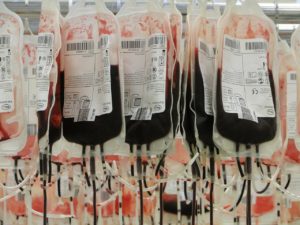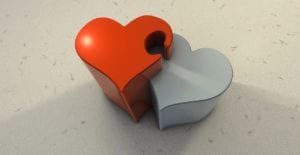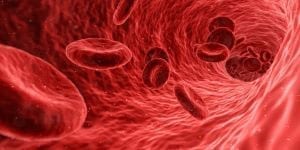Diamond-Blackfan Anemia
What is Diamond-Blackfan anemia?
Diamond-Blackfan anemia is a rare genetic mutation of the bone marrow—it’s thought five to seven out of every million infants around the world has Diamond-Blackfan anemia. Bone marrow is the body’s factory for making new blood cells; Diamond-Blackfan anemia causes problems in the production of red blood cells, which are the “carriers” that transport oxygen throughout the body. With fewer red blood cells (which is called anemia), patients are subject to a whole host of health complications. While some of these can be serious—including a higher risk of developing certain types of cancer—it is possible to manage Diamond-Blackfan anemia through a combination of treatments. In some cases, full remission is possible.What causes Diamond-Blackfan anemia?
Diamond-Blackfan anemia is caused by a mutation in one of several genes responsible for sending instructions to create ribosomal proteins. Ribosomal proteins are part of a complex cellular structure that is not fully understood, but is thought to play a role in controlling cell divisions and programmed cell death, or apoptosis. Mutations in the genes that create these ribosomal proteins could lead to a higher rate of apoptosis in the red blood cells created in the bone marrow.What are the symptoms of Diamond-Blackfan anemia?
Diamond-Blackfan anemia symptoms are largely consistent with the classic symptoms of anemia, such as:- Pale skin
- Sleepiness
- Irritability
- A fast heartbeat
- Heart murmurs
- Smaller head
- Wide-set eyes, droopy eyelids, and eye problems like cataracts and glaucoma
- Broad, flat nose bridge
- Smaller, low-set ears
- Smaller lower jaw
- Cleft palate and cleft lip
- Shorter, webbed neck
- Smaller, higher shoulder blades
- Deformed or missing thumbs
- Stunted growth
How is Diamond-Blackfan anemia diagnosed?
Most Diamond-Blackfan anemia patients are diagnosed between two and four months old. Diamond-Blackfan anemia diagnosis involves looking for a set of anemia symptoms such as pale skin, sleepiness, irritability, and a fast heartbeat and heart murmurs. Doctors also look for a set of diagnostic criteria that include (but are not limited to):- Family history
- Reticulocytopenia, which is an abnormal decrease in the number of immature red blood cells
- Macrocytic anemia, which is an anemia where the red blood cells are larger than normal
- Complete Blood Count (CBC) to analyze the cellular components of blood
- Reticulocyte Count (Retic) to measure the number of immature red blood cells
- Mean Corpuscular Volume (MCV) to measure the size of the red blood cells
- Bone Marrow Aspiration or Biopsy to examine how many blood cells are being produced in the marrow
- Genetic testing to look for mutations in the genes associated with Diamond-Blackfan anemia
What treatments are available for Diamond-Blackfan anemia?
Diamond-Blackfan anemia treatment focuses on boosting the body’s red blood cell production or replenishing red blood cells. For reasons that aren’t yet known, corticosteroids can help “jump start” the production of red blood cells in the bone marrow. Initially, doctors start patients on high doses and then slowly reduce the dose to a level that’s sustainable over the long term. Doctors may also recommend blood transfusions to replace red blood cells. Depending on the patient, these can be done on an as-needed basis when hemoglobin levels are lower, or on a regular schedule for more chronic cases where hemoglobin levels are consistently low. Patients may also receive chelation therapy to remove excess levels of iron in the blood. The body has no natural mechanism for removing excess iron; chelation therapies, in oral or infusion form, bind to the iron and help it pass out of the body through urine or stool. The only way to potentially cure Diamond-Blackfan anemia is through a stem-cell transplant using healthy bone marrow cells from a donor. If successful, the patient’s bone marrow functions normally without the need for corticosteroids or blood transfusions. The risks are high, though, and the odds of survival are substantially lower if the donor is not related to the patient. For this reason, stem cell transplant remains a highly controversial treatment option for Diamond-Blackfan anemia.Where can I find more information about Diamond-Blackfan anemia?
Diamond-Blackfan Anemia Articles

Thalassemia and Sickle Cell Patients in the UK Gain Access to Blood Transfusion Test to Reduce Side Effects
Rose Duesterwald
March 1, 2024
Read More »

Star Player at USC Donates Bone Marrow to Sister with Diamond Blackfan Anemia
Kendall Mason
March 6, 2020
Read More »



Combination Therapy for Diamond Blackfan Anemia Could Reduce Side Effects
Trudy Horsting
February 27, 2019
Read More »



This Video Will Melt Your Heart and Raise Money for Diamond Blackfan Anemia Research
Erica Zahn
April 21, 2017
Read More »



